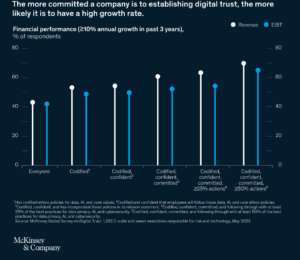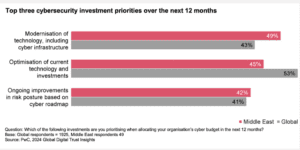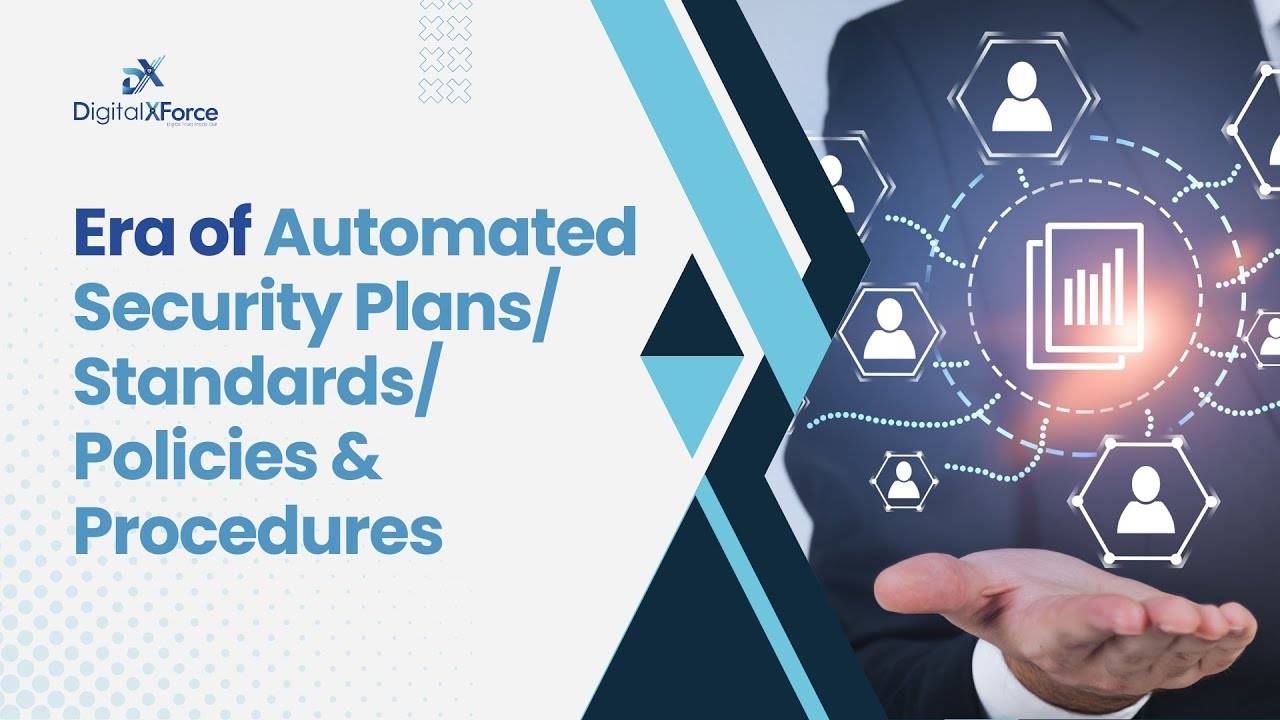
Lalit is committed to redefining the future of cybersecurity by helping large, medium, and small scale businesses build digital trust. Here, Lalit discusses how cultivating digital trust will be crucial for cybersecurity in 2024 and beyond. He digs deep into the current distrust in online services and highlights the need to prioritize user-centric security, adopt technologies to balance trust and risk, and design systems with trust principles to nurture trust worthy digital ecosystems.

In the digital age, you depend on technology more than ever before. But every online interaction carries a risk. With data breaches, identity theft, and cyber attacks in the headlines, trust in digital experiences has eroded. This lack of “digital trust” has become one of the biggest obstacles facing cybersecurity today.
Building digital trust should be a priority for your organization in 2024 and beyond. Trust is essential for consumers to confidently use online services and for businesses to securely collaborate across digital ecosystems. Without it, your organization may struggle to extract full value from digital transformation initiatives. This article explores the state of digital trust today, why digital trust is essential, and various ways digital trust will shape cybersecurity in 2024 and beyond.
Table of Contents
Why is Digital Trust Essential?
Digital trust simply means confidently placing your data and transactions in someone else’s hands, convinced they will protect your privacy and security. It assures that technology and business processes will work as intended without unexpected failures or exploits.
In fact, trust has always catalyzed economic activities and human progress. The same holds in the digital realm. However, establishing trust is harder in the boundless domain of cyberspace. There are no physical cues or legal contracts. Security risks seem hidden and abstract for average users. Organizations must go beyond security measures like firewalls and antivirus. Users need to feel the system cares about their well-being before fully embracing it.
Building trust is a multidimensional challenge involving technology, user perceptions, and communication. A trustworthy system should provide visibility, integrity, reliability, and resilience. Therefore, organizations must be transparent in their data practices. And they need to educate users on cyber risks and safeguards.
Fortunately, prioritizing trust is not just idealistic but a pragmatic business approach. Trust in digital experiences leads to greater user engagement, loyalty, innovation, and growth. Therefore, the power of a positive and trustworthy experience is clear. Over half of the executives also believe trust is critical to capitalize on new revenue opportunities. It is the foundation for ecosystems where diverse businesses can openly collaborate and rapidly prototype new digital services.
Current State of Digital Trust
Digital trust stands on shaky ground today. As a result, a barrage of cyberattacks, data breaches, and privacy violations have eroded user faith in online services and technology providers. Here are some shocking statistics:
- According to a McKinsey report, numerous clients have expressed discontinuing their patronage with firms that breached digital trust. Specifically, 40% ceased transactions with a company upon discovering its inadequate safeguarding of customer data. Additionally, 14% of surveyed individuals terminated their association with a business due to ethical misalignment, while 10% took similar action upon becoming aware of a data breach.
- Temkin Group’s recent research shows that 77% of customers are likely to recommend a brand to friends following just one favorable engagement. This highlights the immense impact a single trust-building interaction can have in driving word-of-mouth promotion.
- In a recent survey, ISACA revealed that 86% of respondents are somewhat or very confident in their organization’s digital trustworthiness. However, other research suggests that most customers don’t trust their organizations with their data.
- As per Broadcom findings, 44% of consumers have a moderate level of digital trust, 31% have a low level, and 25% have a high level.
- In a 2022 Statista survey, 40% of consumers worldwide trust the banking and financial services sector with their data.
- A 2021 US Bank for International Settlements survey reveals that less than 5% of respondents reported complete trust in the government or fintechs, and around 20% selected a value of 1, meaning no trust at all.
- Forbes reports that “despite the overwhelming amount of data, few companies make customer retention a priority.”
At the same time, businesses are hesitant to adopt new technologies like AI and blockchain due to cybersecurity fears and lack of transparency. However, this crisis of confidence is stifling innovation and preventing the full benefits of digital transformation.

Rebuilding digital trust requires a collaborative effort across industries. Organizations must make trust a strategic priority, not an afterthought. They should invest in security controls that provide visibility, give users more control over data, and educate them on risks. Restoring trust is challenging but essential to unlock the tremendous potential of our hyperconnected world.
Digital Trust in 2024 and Beyond: Our Prediction
In 2024, digital trust will become integral to cybersecurity strategies. Organizations will make trust a priority to address eroding faith in digital systems plagued by breaches and vulnerabilities. They will adopt a user-centric approach to security to protect privacy while providing visibility into data practices. Advanced technologies like behavioral biometrics and entitlement management will enable dynamic, context-aware evaluation of risks to validate users and grant selective data access. This balances security and trust in distributed environments.
“Trust by design” philosophies will also take hold to architect services with trust principles built-in upfront, not bolted on later. Cross-industry coalitions will emerge to nurture trustworthy ecosystems, with initiatives like standardizing identity and consent mechanisms across interconnected IoT systems. Regulators may also step up oversight of cyber risks and transparency requirements to restore trust.
Organizations will need to regularly demonstrate trustworthiness through technology choices, business practices, and communication. While cyber incidents are inevitable, trust can be regained by being transparent, strengthening defenses, and doubling down on security education.
Ultimately, with digital trust as the guiding tenet, cybersecurity will evolve from being a barrier to an enabler. Trust will spur confidence in new technologies like AI-based fraud detection and blockchain-based supply chains. It will pave the way for open collaboration between enterprises, developers, and users – accelerating digital innovation. In essence, trust will transform cybersecurity’s role from just mitigating risks to actively building a secure digital future that benefits all.

Shaping a Trust-Centric Cybersecurity in 2024
In 2024 and beyond, cybersecurity programs should consciously incorporate “digital trust” to align with user expectations. Some ways to make trust a cornerstone of secure system design thinking:
#1 Adopt a User-Centric Mindset
Traditionally organizations focused on securing networks and infrastructure. But now the priority is to protect user privacy, assets, and activities. Put mechanisms in place to safeguard sensitive user data and minimize risks from account takeovers. Provide users visibility into how their information is secured and used. Create cybersecurity and privacy awareness programs that change user behaviors.
For example, enterprises are appointing Chief Trust Officers to ensure trust remains an integral part of business decisions. Educational institutions are teaching students cyber hygiene and skills like multifactor authentication.
#2 Leverage Advanced Cybersecurity Technologies
Emerging cybersecurity tools enable trust-based digital risk assessment, authentication, and data governance. For instance, behavioral biometrics analyzes user patterns like keyboard dynamics to stop fraudulent logins. Data tagging tracks file activities across cloud systems and user entitlement management limits data access. Such capabilities allow real-time, context-based evaluation of cyber risks. Organizations can validate user identities and grant precise access to confidential data. This balances trust and security even as systems and workforces become more distributed.
At DigitalXForce, we offer a comprehensive suite of cybersecurity solutions that stand at the forefront of prioritizing digital trust inside out. Including attack surface management, risk quantification, automated audit, compliance, and much more. By leveraging data-driven insights, security blueprints, and regulatory control mapping, DigitalXForce optimizes and automates the digital risk posture of organizations with deep machine learning algorithms.
#3 Adopt ‘Security by Design’ Approaches
‘Trust by design’ should become an organization-wide philosophy. When designing services, architect trust principles into processes proactively rather than reactively layering on security controls later.
For example, DevSecOps practices bake security into application development lifecycles. IoT manufacturers are building dedicated security chips into devices to gain consumer trust. Cryptographic techniques like zero-knowledge proofs and homomorphic encryption enable privacy-preserving data analytics.
#4 Foster a Trustworthy Digital Ecosystem
No single organization can address digital trust alone. We need cross-industry coalitions to tackle cyber-related risks in global technology supply chains. Groups like the Trusted IoT Alliance aim to standardize identity, security, and data privacy for interconnected systems.
Consortiums can develop open frameworks, best practices, and certification programs. Common standards remove blind spots and vulnerabilities at ecosystem intersections. Voluntary transparency programs let organizations signal their trustworthiness. These collaborative models nurture trust across digital value chains.
#5 Restore Trust After Incidents
Despite best efforts, cyber incidents are inevitable. Organizations need incident response and communication plans to minimize damage and restore trust. Be transparent about the incident, its scope, and remedial actions. Provide frequent updates across channels. Have senior executives convey empathy and a renewed commitment to security.
You can also regain trust by strengthening defenses, compensating impacted users, and boosting educational outreach. But fundamentally, continue upholding privacy values daily. Consistent trustworthy behavior over time outweighs temporary lapses.
Final Thoughts
Trust is the connective tissue that binds organizations and users in digital environments. Cybersecurity is no longer just about defense but about empathetically addressing user risks. Prioritizing ‘digital trust’ means designing reliable systems that also instill confidence.
With emerging technologies and collaborative models, organizations in 2024 can transform cybersecurity from an obstacle into an enabler for innovation. We all have a shared responsibility to nurture a trustworthy digital landscape. When organizations align security with user values, they unlock endless possibilities for human progress.
For more information on how you can leverage DigitalXForce to secure your IT infrastructure, feel free to check out our suite of cybersecurity solutions and reach out.
 DigitalXForce strengthens trust and security with SOC 2 certification, demonstrating robust data protection, privacy practices, and operational excellence in delivering cutting-edge digital solutions for clients across industries.
DigitalXForce strengthens trust and security with SOC 2 certification, demonstrating robust data protection, privacy practices, and operational excellence in delivering cutting-edge digital solutions for clients across industries.


